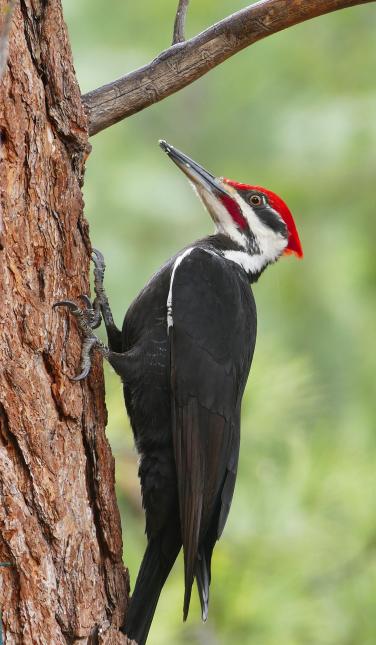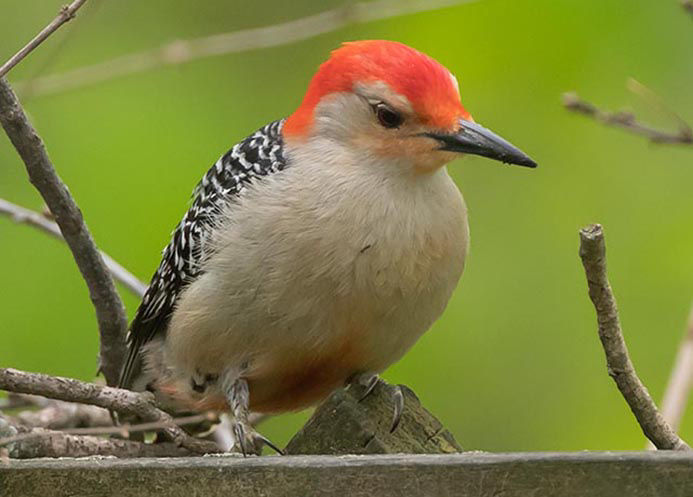Experiencing Woodpeckers in Florida: Species Variety and Recognition
Experiencing Woodpeckers in Florida: Species Variety and Recognition
Blog Article
Woodpeckers: A Comprehensive Overview to Comprehending These Special Birds
Woodpeckers, with their distinctive actions and physical qualities, have actually long astounded the interest of ornithologists and nature lovers alike. As we explore the intricate anatomy, varied species, and environmental relevance of woodpeckers, a deeper recognition for these one-of-a-kind birds and the mysteries they hold unfolds.

Woodpeckers' Drumming Actions
Woodpeckers display a rhythmic and exact drumming actions that offers different vital functions in their every day lives. This behavior is primarily connected with interaction, territory defense, and foraging. The unique drumming noise is created by the fast pecking of their beaks versus difficult surfaces such as tree trunks, branches, or also metal objects.
Communication is an important element of woodpecker actions, and drumming plays a considerable duty in this procedure. Woodpeckers utilize drumming to develop their visibility, attract companions, and maintain contact with their companions and children. The frequency, intensity, and period of drumming series share certain messages to various other woodpeckers in the area.
In enhancement to communication, woodpeckers use drumming behavior for region defense. Woodpeckers in Florida. The loud and recurring drumming works as a cautioning to possible intruders, indicating that the area is currently asserted. By developing their territory through drumming, woodpeckers decrease the likelihood of conflicts over useful resources such as food and nesting websites
Furthermore, woodpeckers additionally use drumming as a foraging technique. The balanced pecking assists them locate bugs concealing below the bark of trees by producing resonances that interrupt the target's cover-up. This habits showcases the adaptability and ingenuity of woodpeckers in utilizing their drumming skills for numerous necessary functions.
Distinct Adaptations for Tree Climbing
Having understood the art of drumming to connect, safeguard area, and forage, woodpeckers have advanced unique adaptations that promote their exceptional climbing abilities in their arboreal habitats. Woodpeckers have zygodactyl feet, with 2 toes aiming ahead and two toes pointing backward. These tail feathers give security and equilibrium, allowing woodpeckers to steer up tree trunks with precision and agility.
Additionally, woodpeckers have powerful neck muscle mass and a special head structure that aid in their climbing capabilities. Their strong neck muscles enable them to quickly peck at tree bark without experiencing whiplash, while their thick skull and little mind serve as shock absorbers, securing them from the influence of repeated drumming. These adjustments jointly enable woodpeckers to browse the vertical globe of trees with efficiency and elegance.

Duty of Woodpeckers in Ecological Communities
Playing a critical duty in forest communities, woodpeckers contribute considerably to the balance and health of their environments with their distinct actions and interactions with various other varieties. One of the vital eco-friendly functions of woodpeckers is their function in controlling insect populaces. By foraging for bugs under the bark of trees, woodpeckers assist regulate bug populaces, avoiding episodes that might hurt the general health of the woodland. Furthermore, woodpeckers create cavities in trees that serve as essential nesting websites for a range of various other bird types, advertising biodiversity within the ecological community.
In addition, the drumming and articulations of woodpeckers play an essential duty in interaction and territory establishment. These audios not just serve to draw in mates but likewise aid define limits between different woodpecker regions, lowering conflicts and advertising a harmonious coexistence within the woodland neighborhood. In general, the presence of woodpeckers in woodland ecosystems highlights their significance as keystone species, influencing the dynamics and operating of these environments in multifaceted methods.
Anatomy: Specialized Beaks and Feet
In the detailed internet of forest ecological communities, the specialized beaks and feet of woodpeckers are crucial adaptations that allow them to fulfill their important eco-friendly roles. Woodpeckers possess one-of-a-kind physiological attributes that are particularly designed to assist them in their foraging and nesting actions.
One of the most distinguishing characteristic of woodpeckers is their strong, chisel-shaped beaks. These beaks are flawlessly adapted for drilling into wood to reveal bugs, larvae, and sap surprise under the bark of trees. The strong muscle mass and durable framework of their beaks allow woodpeckers to eat a price of up to 20 times per secondly without creating damages to their skulls.
Furthermore, woodpeckers have specialized feet that check this site out help in their acrobatic climbing capabilities. Their feet have 2 toes pointing ahead and 2 toes pointing backward, offering a strong grasp on upright surfaces (Woodpeckers in Florida). This distinct foot plan, along with learn this here now rigid tail feathers that serve as a helpful prop, enables woodpeckers to stick to tree trunks and branches with convenience while they browse for food or excavate nesting dental caries
Woodpecker Types Diversity
What variables contribute to the exceptional diversity of woodpecker varieties throughout different environments and regions? Woodpeckers are a diverse team of birds located throughout various ecological communities worldwide, with over 200 well-known types exhibiting adaptations to different settings. One key element driving this diversity is the accessibility of appropriate environments. Woodpeckers have actually progressed to inhabit a series of atmospheres, from woodlands and forests to meadows and deserts, each offering distinct obstacles that have influenced the evolution of unique woodpecker varieties.
One more contributing factor to woodpecker varieties diversity is their specialized feeding habits. Different species have progressed to make use of various food sources, such as pests, tree sap, fruits, and nuts, leading to the advancement of details adjustments in beak form, size, and toughness. These adaptations enable woodpeckers to forage efficiently in their respective habitats, reducing competitors amongst varieties and promoting niche distinction. Additionally, geographical isolation and historic aspects have actually played a function click to read more in forming the circulation and variety of woodpecker varieties, resulting in the large array of specialized adaptations seen in these fascinating birds.

Final Thought
Finally, woodpeckers are interesting birds that show special drumming behavior, specialized adaptations for tree climbing, and play important roles in ecological communities. Their composition, including specialized beaks and feet, allows them to thrive in their setting. With a varied array of woodpecker species discovered worldwide, these birds are crucial for maintaining the wellness and equilibrium of forests and timberlands. Understanding and valuing the details of woodpeckers can give useful insights into the all-natural globe.
Report this page